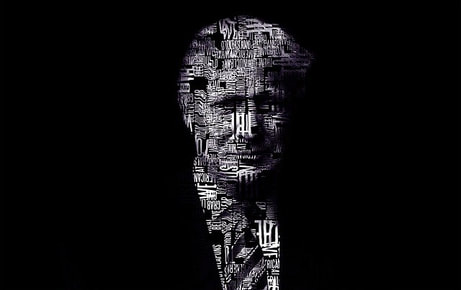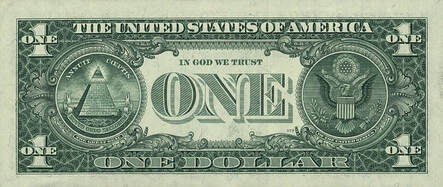|
This week we continue to explore the global financial system as it currently stands and how we have come to this position. In particular, I shall focus on the USD as the reserve currency, the Eurodollar market and how money is actually created. The goal being that by the end of this part of the series, the readership will be able to understand how the rise or fall in the USD can end up impacting credit growth in seemingly far flung or unrelated economies like China and Australia. Why, when the latest round of monetary stimulus was put in place, the Fed included dollar swap lines to central banks around the world, including Australia, to keep the system on stable footing.  Author: Sid Ruttala Author: Sid Ruttala Before we get into it further though, and in a parallel thought process, I was recently sent the below on a Whatsapp message by my father asking me to explain what exactly happened in this scenario (which I must say I could not). Post your thoughts in the comments section below...
My thoughts are tentatively that the tourist is the central banker in this instance with the caveat that he/she knows precisely what’s going to happen to the note left on the table but chooses to ignore it in the hope that they might time their return in a reasonable manner so as not to shake the appearance of rationality. The hotel owner is the banker (i.e. the financial system) and the whole thing works as long as the velocity at which the note travels through the system stays at a reasonable pace and doesn’t stop in between. If it does, and the note is not on the table in time, we have ourselves a crisis. We can all blame big bad Wall Street for not playing fair.  A Walk Down History Lane As we elaborated upon last week, money as we know it is not an asset class but rather a medium of exchange. In eons gone by this came in the form of hard currencies denominated by commodities but, as could be imagined, with the advent of trade and increasingly sophisticated modes of business transactions, paper eventually replaced the hard currency. But it has always been the case (until the very recent past) that said paper would be backed by hard assets. Whether in Carthage where paper took the form of promissory notes or in China, the first to create modern paper, but this was effectively an IOU. The fundamental premise of the entire system is built on trust and that is the reason for the rise of reserve currencies. The powers that be of the day typically have what might be called the “trust surplus”. And so the Roman Empire, in its heyday and dominion over much of the civilized world across Asia Minor, had the Reserve Currency. Similarly for much of the nineteenth to early twentieth century it was the pound sterling. So, why is it that we need a reserve currency in the first place? Think of the following example: an Australian firm decides to export to Sweden. The goods, once shipped, would have to be paid for by the recipient who would be paying in Swedish Krona. That Australian firm unfortunately can’t do much with the Krona in Australia and neither is it efficient to ship physical paper across the seas. So, we land upon the need for an acceptable intermediary. Here is where the reserve currency comes into the equation, the transaction would go from Krona to USD to AUD (and back if the transaction was in the opposite direction) with the USD effectively acting as the intermediary. In fact, it is quite possibly the biggest and most important market that most would never have heard off. The eurodollar market (the name being a misnomer since it refers to all USD time deposits outside of US jurisdiction). The next question would then be, does this mean that all banks would need to carry USD? Well, to a certain extent, yes. However, here we’ve evolved to a certain extent in that the solution to this fundamental problem was through the creation of another market called bankers’ acceptance. Rather than a physical transaction, it would simply be in the old days the stroke of a pen on the balance sheets of transacting banks on the opposite ends of the trade with the underlying acceptance convertible again into the USD (mind you this often never actually took place, the acceptances keep transacting in a market of their own, so basically if you consider money itself an IOU than this is an IOU on an IOU). Why USD? Well for one thing it is not only because it is the largest economy in the world but goes back to post-WWII history. The original intention of Keynes was not, by the way, to have a single national currency be dominant but to create a global one by the name of Bancor which would be administered by the IMF (International Monetary Fund), the IMF’s modern day equivalent are the SDR’s (Special Drawing Rights). Unfortunately, the Yanks, who at that particular time and coming out of the two World Wars were running up massive current account surpluses, thought it would be in their best interests to use the USD as the reserve currency. As can be imagined, this was not palatable on face value for many of their counterparts since it would give the American government and the Federal Reserve effective control of the global financial system. In essence, the need for USD by the rest of the world would ensure a consistently high demand for the USD and US denominated assets (including treasuries) and ensure what De Gaulle, that grand old French statesman, called the exorbitant privilege. It is this that means that the US could theoretically maintain current account deficits and run-up fiscal deficits without facing any real ramifications that would usually be the case (through the decrease in purchasing power or inflation) seeing as the rest of the world would effectively be subsidising US government deficits and what was effectively a transfer of wealth. We’re quite sure the Chinese aren’t buying US treasuries out of the goodness of their hearts but if you’re an export market and your government wants to keep a lid on currency fluctuations as well as keep the private sector exporting to the rest of the world, you would need liquidity and a medium of transacting. The lack of alternatives also became evident once the Sterling lost all credibility through a series of crises in the fifties, including the Suez Crisis, with perhaps the final death knell being Black Wednesday (thank you Mr Soros, well played). But back to why the negotiations at Bretton Woods were concluded with the USD in favour. It was the United States’ acceptance of maintaining convertibility of the USD to gold. Which would effectively mean that there is a fiscal and monetary restraint mechanism built into it seeing as the amount of money supply would have to be in proportion to the amount of bullion reserves at the Fed. This, by the way, is also what led to the confiscation of all private gold assets in the US by the federal government (freedom?). That was until Nixon came along in 1971 and suspended the convertibility of the USD to gold so as to finance the war efforts in Vietnam. The French might also have had a role to play since they were effectively sequencing out of the USD reserves in favour of building gold reserves. This suspension is actually temporary in theory but every President extends it via executive order. After close to five decades you have to ask, how temporary is it really? To The Present So we’ve gone from a money supply constraint (at least nominally) to the effective fiatisation of the money markets all together. Let us for a moment forget what money is guaranteed against since there is no answer to that particular question any more outside that it is a medium of exchange. But the financial system has evolved since then, to a point where money creation itself is unquestionably complex. Firstly, it leads to a hegemony of sorts for the reserve currency. Whereby the demand for that particular currency always leads to current account deficits and the actual process of money creation is externalised from the domestic policy environment. For the economists amongst you, this is the Triffin's Paradox. Where the demand for USD and US denominated assets leads to an artificially high currency while at the same time letting the Reserve economy benefit from a purchasing power perspective (i.e. in traditional economic theory, runaway creation of money supply or fiscal expansion should lead to inflation but in this instance it would not be the case). Ever wondered why even US equities trade at such an unquestionable premium to their global counterparts? If this was the case why did the seventies and hyperinflation come about? Simply put, it wasn’t solely Nixon or the war effort, it was a dirty little secret that seemingly remains one to this day. There is no tracking how much money is created or how much money supply is growing by. Why? Remember that the banking system is predicated not from the physical exchange of cash but bankers acceptances or, as Fridman explained it, bankers liabilities transferred from one bank to the next. Theoretically there is a call on actual USD in terms of CD’s but there didn’t need to be deposits of actual cash up front. Rather they are derivative claims on derivative claims (and the system keeps functioning as long as no one actually makes the call on the underlying, much like the tourist who left the $100 bill which the hotel owner uses but doesn’t actually have a claim on). In terms of why it would be impossible to keep a track of money supply, think about the creation of USD outside of the US. Let me give you an example (relayed from Fridman). Let's say you deposit $100,000 into an offshore bank account in New York but decide to transfer it to another bank, let’s call it BankX, in Sydney (still USD denominated). In this transaction, your 100,000 goes from your account in Bank New York to BankX in Sydney. Assuming that BankX has a dollar deposit account at Bank NY, BankX now has 90,000 USD (10% capital adequacy) in free cash to lend to an Australian company that is doing business in the US. This then comes back into the US system. Domestic money supply has changed in no way since there is still $100,000 in the system (BankX’s dollar deposit account accounting for the other 10%, since it uses that account as a guarantee for the transactions of the Australian company). Simply put, that 100,000 is still in circulation in the US domestic system but it also exists on the books of BankX, thus in circulation in the Australian system too. Voila, you’ve just created an additional 100,000 USD in global money supply even though the domestic USD supply hasn’t changed, there is now an additional 100,000 floating in the ether. Consider what happens when US banks who wish to take advantage of the multiplier effect decide to set up subsidiaries offshore, say if JP Morgan sets up an operation in London. They not only effectively create more money but they can also do so while circumventing the traditional capital adequacy requirements because subsidiaries aren’t encumbered by these regulations. Theoretically speaking the financial system is incentivised to move as much currency from one subsidiary to the next and create additional money supply. So what does this have to do with inflation in the seventies? For one thing, if you don’t know what the supply side of the equation even looks like, it is similar to driving at midnight without the benefit of headlights. Volker, when he came along, did not even bother to control money supply but rather force fed and controlled the demand side of the equation through interest rate policies. So if you take anything away from this rather dense diatribe, the point this particular author is trying to get across is that in the current situation there is no credible way to actually control the supply side of the equation, only demand. Which is precisely where the notion of QE, low interest rates and (more recently) fiscal policy has come into the equation. It is the idea that we don’t actually know how much is out there, but that there is a lot and we need to find ways to maintain or increase the velocity at which this theoretical money moves through the system. This seeming paradox is perhaps what led to the savings glut in the lead up to the GFC despite the Greenspan put and low interest rates (which are supposed to disincentivize sayings). The system works fine but only when the money keeps moving.  Why Does It Matter To You? At this point you might be asking yourself, how does this actually impact my world though? And it is simply this, at the very least, we wish to show the readership that what most people perceive as the reality of monetary or fiscal policy is not what is actually the case. From an investment standpoint, understand that currency as we know it is predicated on perception. Inflation doesn’t come about simply because of increased money supply; if that were the case, then we would be in the thick of it right now. With fiscal deficits in the US to the tune of 10% of GDP and most governments across the world going in the same direction. The reason it tends to happen quickly is perception, that is, a fundamental disbelief in what your note (or digital signature) is worth. This is why governments across Europe can get away with negative interest rates. After all, if your debt is denominated in your own currency and there is nothing backing it apart from a belief or trust then it seems more rational to print and eat the debt away (bring on debt monetization and MMT). This is why the US Treasuries yield so little. Think for a moment whether you would lend to a business at 0.109% (current 2-year) yield with a leader (apologies to the Trump supporters) that has a history of declaring bankruptcies as a matter of “smart business” practice. Or put more simply, if a business decides that it will pay you by printing more IOU’s or notes and, in the event of a default, you can’t actually call upon its assets... Not saying that governments are the same, but that really is what cash or treasuries are, an IOU (in this instance since you can’t seize the assets of the state, an IOU for another IOU). Where to Next?
Within the broader context, we do however see changes (still very much in their infancy) taking place. The USD still remains a rather sticky “asset” class and the global financial system is too reliant on it to change overnight, BUT the continued use of unilateral sanctions is starting to test the patience of even her allies. The Chinese with their release of the Petroyuan contract, whereby payments for oil would be in Yuan and on the Shanghai exchange, is perhaps a sign of what is to come. The problem with dismantling USD as the reserve currency is there would need to be an alternative. Part of the battle cry of the crypto-bulls is that a non-centralised and finite currency (i.e. a Bitcoin) is the solution. All that said, at this point there is no credible alternative, with the Chinese state still insistent on keeping capital controls (no regulator wants to give up control, do they?) and the whole crypto-debate nowhere near over. The last time it looked like there was a potential alternative exchange medium to the Greenback, it resulted in the now historic Executive Order 6102 in which the US government seized all private gold assets (aside from a small amount of jewellery or gold coin) in 1933 for 20 USD (citizens were not given a choice). Over the long-run though we might gradually see a decreasing reliance on the USD as a mode of exchange with the likely move towards a peg against precious metals coming back into vogue. For that to happen, we will have to see central banks around the world increasingly dispensing of US Treasuries stockpiles and substituting for bullion. For now the United States’ exception as the one place on earth where property rights are protected even beyond that of humans makes it a continued safe haven and the medium term will likely see continued interest on USD assets, whether equities or real assets, whatever the political or societal dysfunctions in her domestic scene. Maybe this was why the Soviet chiefs stashed their ill-begotten hoard in USD denominated assets (in Switzerland) even during the height of Soviet power. It isn’t simply a question of who has the most power, but where my wealth feels safest. We look at how this current situation is likely to change and what the global financial system may look like over the long-run next week.
1 Comment
Richard Harper
6/8/2020 05:16:53 pm
Imagine the pig farmer had spent the night. He would have got a night's value. All the other transactions would be the same EXCEPT that when the prostitute gave the hotel owner the money he got to keep it and go to the pub with his mates.
Reply
Your comment will be posted after it is approved.
Leave a Reply. |
Markets & CommentaryAt TAMIM we are committed to educating investors on how best to manage their retirement futures. Sign up to receive our weekly newsletter:
TAMIM Asset Management provides general information to help you understand our investment approach. Any financial information we provide is not advice, has not considered your personal circumstances and may not be suitable for you.
Archives
April 2024
Categories
All
|
TAMIM | Equities | Property | Credit
DISCLAIMER
The information provided on this website should not be considered financial or investment advice and is general information intended only for wholesale clients ( as defined in the Corporations Act). If you are not a wholesale client, you should exit the website. The content has been prepared without taking into account your personal objectives, financial situations or needs. You should seek personal financial advice before making any financial or investment decisions. Where the website refers to a particular financial product, you should obtain a copy of the relevant product services guide or offer document for wholesale investors before making any decision in relation to the product. Investment returns are not guaranteed as all investments carry some risk. The value of an investment may rise or fall with the changes in the market. Past performance is no guarantee of future performance. This statement relates to any claims made regarding past performance of any Tamim (or associated companies) products. Tamim does not guarantee the accuracy of any information in this website, including information provided by third parties. Information can change without notice and Tamim will endeavour to update this website as soon as practicable after changes. Tamim Funds Management Pty Limited and CTSP Funds Management Pty Ltd trading as Tamim Asset Management and its related entities do not accept responsibility for any inaccuracy or any actions taken in reliance upon this advice. All information provided on this website is correct at the time of writing and is subject to change due to changes in legislation. Please contact Tamim if you wish to confirm the currency of any information on the website.
magellen, kosec, clime, wilson, wam, montgomery, platinum, commsec, caledonia, pengana, tamim


 RSS Feed
RSS Feed